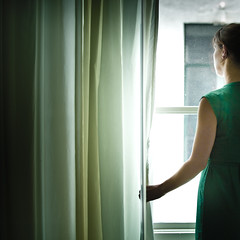The Boy Who Died by Damon Lindelof (co-creator and head writer of the television series “Lost.”)
When Ms. Rowling first took us by the hand and led us down the path of her story (a brilliant one, I’ve neglected to mention), she boldly titled her first chapter “The Boy Who Lived.”
We come to learn later that Harry has survived an assassination attempt ... both his parents had sacrificed their lives to spare his. The most rewarding ending would be one in which he performs a similar act of self-sacrifice. I would just about giggle with glee were I to get to the last chapter (I never peek ahead) and find it titled “The Boy Who Died.”
When Harry Met Davey by Meg Cabot (author of the “Princess Diaries” series. Her most recent book is “Queen of Babble in the Big City.”)
DAVID LETTERMAN So that’s good, right? You defeated the bad guy. You got the girl. All the nice dead people came back to life. And you’re now head of the whole wizarding operation. So you’ve got yourself a completely happy ending, right?
HARRY No one was expecting that. But yes, exactly.
Made in Hogwarts by Larry Doyle (a former writer for “The Simpsons” and now a screenwriter, is the author of “I Love You, Beth Cooper.”)
“I’ll tell you something,” Ron was prattling on. “I’ve had enough of wizarding after that.”
...
“I’m going to Hollywood,” said Ron. “That’s where the real magic happens.”
Hermione Tells All by Polly Horvath (the author of “The Canning Season” and the forthcoming “The Corps of the Bare-Boned Plane.”)
Hermione: “Well, that’s the thing, isn’t it? Once you graduate, oh, sure, you’ve got the ruddy degree in witchcraft and the dark arts but whatcha gonna do with it? Doesn’t half pay the rent. I got me a new tack now. I’m writing some books. Seven or so. Gonna sell them and make some money. I got the whole thing planned out.”

I envisioned scenes from an apocalyptic battle. Strung together in a nonlinear visual narrative, they are meant to set a certain mood. I intended to offer points of departure for the imagination rather than provide a concrete answer to the question of how it will all end.
— ANDREA DEZSÖ, an artist and a professor at Parsons the New School for Design















